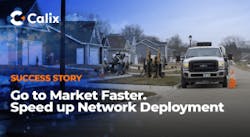Getting Smarter
Smart Buildings Will Become Platforms for Services in Smart Cities —
Cities around the world have made great strides in developing connected environments to enable operational efficiency, sustainability and citizen services. There are over 1,000 Smart City initiatives taking place around the world (IDC), with Asian technology centers of Korea, Japan, and China leading in number and investment.1 Interpretations of Smart Cities differ, but national and local governments are committed to improving quality of life and working conditions for their citizens through advanced technology.
Smart Buildings [reach] beyond being ‘just’ bricks and mortar, to become digitally enabled platforms that can open a broader marketplace to both the real estate and ICT industries.
For most cities, the easiest "Smart project" with the highest return on investment is often installing LED street lights with sensors. This has proven a beneficial first step with quick returns of lower electricity costs, longer light life spans, and much needed data on air quality, noise, criminal activity, and others.
However, a series of projects does not lead to a well-integrated Smart City, a result that is often frustrating to city officials, citizens, and vendors. Municipalities need support to enable the holistic environmental transformation they themselves seek for their citizens and their own operations. Here in the US, for example, transforming transportation, from traffic pattern management to electric, autonomous vehicles, is an area of key focus for the urban planners, the transportation industry, federal agencies, and local municipalities. And yet, while some cities have robust fiber installation, even they do not have the kind of fixed-wireless connectivity needed to support this evolution. We need to rethink the approach to attaining a Smart environment.
The answer, though, may lie with a different approach that is standing right in front of us. As Smart Buildings develop in sophistication and number, they can themselves serve as a bridge to achieving the Smart environment necessary, and with greater speed. Both public and private sector real estate can be instrumental to establishing the needed infrastructure and systems.
But, to truly take advantage of the role Smart Buildings can play, the definition of a Smart Building first needs to be expanded.
To date, the "Smart" focus on buildings has centered around environmental sustainability and improvements. For good reason: in the US, residential and commercial buildings consume close to 40% of total energy,2 and globally they contribute nearly 40% of annual carbon dioxide emissions.3 Much attention continues to focus on leveraging Smart technology to turn around these statistics.
In addition, happy and healthy living and working environments have also been an area of development within building technology, with changes in air flow contributing to a 61% increase in cognitive capability,4
and productivity savings of $6,500 per person per year according to the U.S. Department of Labor.5
What if we took a more expansive view of the built environment and what it can provide, combined with the fast-evolving Information Communication Technology (ICT) market trends and products?
InvisiLight® Solution for Deploying Fiber
April 2, 2022Go to Market Faster. Speed up Network Deployment
April 2, 2022Episode 10: Fiber Optic Closure Specs Explained…
April 1, 2022Food for Thought from Our 2022 ICT Visionaries
April 1, 2022TIA’s Smart Buildings Program is taking this approach. Combining the growing ubiquity and variety of sensing technology that captures video, light, audio, air quality, location, mobility, and more, creates valuable data that can be used by building systems and Internet of Things (IoT) applications. Adding developments in machine-to-machine learning and artificial intelligence to these, brings forward building functionality and experiences which can meet individual building user needs. Together these ideas form the core of an IoT-enabled, integrated environment goes beyond the concept of the "intelligent building" we often see today, and realizes the potential of the truly Smart Building.
Underlying and enabling all this functionality is communications infrastructure. This observation lead TIA to create its Smart Buildings Program, working with a broad spectrum of TIA member companies in information technology, as well as partners in the real estate ecosystem, to develop a benchmarking reference architecture, setting the standard for Smart Buildings.
TIA’s benchmarking standard defines Smart Buildings as reaching beyond being "just" bricks and mortar, to a digitally enabled platform that can open a broader marketplace to both the real estate and ICT industries. By taking advantage of the combined and integrated effects of core Smart Building capabilities, the real estate marketplace can take advantage of new revenue-generating and cost-saving business models.
Buildings have the potential to become IoT Building-as-a-Service platforms that enable all who touch them — from owners, operators and managers, to tenants, visitors, and residents — to leverage the building to meet their needs and generate benefits in the process.
• Building owners can now offer tenants a variety of service packages with access to connectivity, levels of individualization to meet tenant and visitor health and well-being needs, ways to track and manage energy costs, and more.
• Retail stores in malls can redesign the experiences they create to include such things as virtual and augmented reality (VR and AR).
• Warehouse owners can offer tenants different levels of asset tracking capabilities, autonomous robotic use, and robust and safe data management systems.
• The services can also vary in granularity of location from the building overall, to zones, to a business suite, office, workstation, or mobile individual.
Thus, for both new construction and refurbished buildings, regardless of the type of property and how it is used by individual owners, tenants, visitors, and residents, the building with a Smart-capable communications system backbone can act as a platform that can meet their particular needs.
Once Smart Buildings can consistently offer Smart services that integrate with their surrounding cities, the possibilities for a Smart City expand as well. Imagine what can happen when a city government begins to transform its own buildings and supports private sector real estate development of Smart Buildings. With fixed wireless connectivity running along streets and in and through buildings, coupled with data captured by and shared among buildings and municipalities, joined with integrated municipal and building systems, we start seeing the currently elusive Smart City developed literally from the ground up.
Within the next 5 to 10 years, the live-work-play ecosystem we know today will transform dramatically.
As never before, the ICT industry has a powerful and meaningful role to play in the definition and creation
of that future environment. Creating standards and assessments that help define and enable truly Smart Buildings is critical as we move forward into this future. These buildings in turn become the foundation of truly Smart Cities and move us past a project-by-project approach.
Endnotes
1. The Economic Times, "China has highest number of smart city pilot projects: Report," 20 Feb. 2018 https://economictimes.indiatimes.com/news/international/world-news/china-has-highest-number-of-smart-city-pilot-projects-report/articleshow/62998738.cms
2. U.S. Energy Information Administration, 3 May 2018 https://www.eia.gov/tools/faqs/faq.php?id=86&t=1%20https://www.eia.gov/consumption/commercial/pdf/2018CBECSQuestionnaireOutline.pdf
3. Architecture 2030, "Why the Building Sector," http://architecture2030.org/buildings_problem_why/
4. Office Renew, "Why you should demand fresh air in your office," http://officerenew.com/tips-and-trends/place/better-office-air-quality-proven-to-increase-productivity/
5. For Health, "THE 9 FOUNDATIONS OF A HEALTHY BUILDING," 2016 http://forhealth.org/Harvard.Building_Evidence_for_Health.the_9_Foundations.pdf
TIA’s Smart Building Standard, Assessment and Certification Program is focused on creating standards to enable interoperability across these platforms, buildings and services, which will unlock potential for truly smart cities to provide more benefits including a connected, sustainable, healthy and supportive environment.
About the Author





